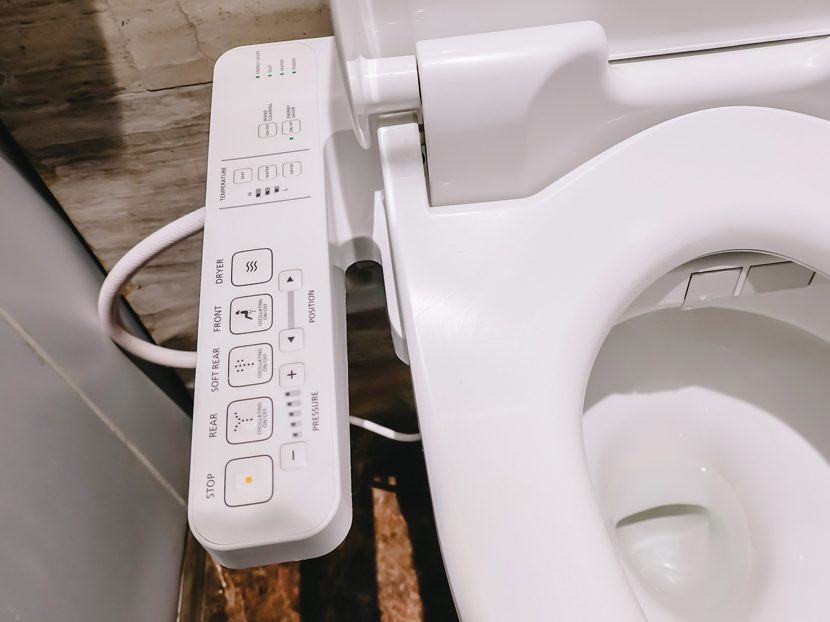New Selling Skills
The health and wellness market is booming, and your showroom staff should be educated in selling the kitchen and bath products related to it.

The advent of COVID-19 and the amount of misinformation spread by social media and driving up fear has created some tremendous opportunities for sales in our showrooms. The pathway to profit lies in well-trained staff with in-depth product knowledge and exceptional soft-selling skills. Selling based on trust, not fear, is the best way to grow your showroom business; I hope this column will help you along the way.
One thing we all need to agree on: COVID-19 is now part of our lives, and what we value as consumers will change forever.
“Based on current evidence, the risk to water supplies is low,” notes the EPA on its website. “Americans can continue to use and drink water from their tap as usual. EPA also encourages the public to help keep household plumbing and our nation’s water infrastructure operating properly by only flushing toilet paper. Disinfecting wipes and other items should be disposed of in the trash, not the toilet.”
Two things in that statement showroom owners should pay attention to: The first is that “based on current evidence” is a phrase allowing for interpretation. It certainly means the risk could change. It also means your showroom team should be actively learning about the benefits of water treatment systems and if a UV system could be a possible solution for your customers.
The truth is fear sells. The unknown nature of COVID-19 is already making water treatment manufacturers see an uptick in business. I am in no way saying that the coronavirus travels through water, or that you should be deceptive with your customers. You should promote the health and safety of the people who live in that home, whether in clean water or clean air.
There is no reason why showrooms shouldn’t be selling water systems for this reason or the simple protection of clients’ investment in decorative products.
The other critical statement is keeping the infrastructure intact by not flushing “flushable” wipes. This, again, is a selling opportunity. The bidet market is now being challenged with competition from Target and Walmart. Every sale of bath products made in your showroom should have an option of a bidet included, if possible. Salespeople should be confident about how they work, the differences between brands and why a consumer needs one.
In previous columns, I have shown advertisements for bidets from the 1930s in American magazines — yet here we are still trying to get showrooms to make them part of every bathroom sold.
If you are smart, you can create kits in your ERP system and add select products on every bid. Then, if you are even savvier, you can measure your showroom employees’ bid-to-close ratio to see who is successful or in need of additional help in selling both bidets and water-conditioning products.
A New Kind of Luxury
I believe Millennial consumers will continue to make the wellness market — especially with bath products — grow. I also believe they will be less worried about brand and channel of purchase, and more concerned with ease of purchase and installation.
International design and technology firm Matter of Form noted in its 2019 Luxury Report (www.matterofform.com/the-luxury-report) that millennial and Gen Z consumers generally reject traditional wealth stereotypes and “look for new values to define status, from social connections to insider knowledge. They are likely to make value-based acquisitions and purchases.” The products they buy must be special to them and genuinely functional.
Luxury is found through their experiences — free time, travel, community, self-growth and wellness. “Keen to express their entrepreneurial spirit, individuality and self-made success, [millennials and Gen Zers] are in search of luxury brands aligned with their values and provide a seamless digital experience,” the report notes. They expect “fast, tailored service,” both physically and digitally.
The more prominent brands in the wellness category should be concerned.
A CNBC article notes that, “instead of showing off an upscale bag or car, which might feel too conspicuous when the U.S. economy is in a downward spiral, consumers are instead displaying their ‘wellness’ during stay-at-home orders.” Malinda Sanna, founder and CEO of consultancy Spark Ideas, told the network that “health and vitality … kind of are the new luxury;” any symbols or cues related to them are on-trend.
Her firm’s research with luxury buyers in U.S. cities revealed the popularity of high-end fitness equipment such as the Peloton bike, the CNBC report says. One woman in the study said she was “in love” with the bike because of “the status it has with my friends.” This trend is happening in the luxury bath segment as well, with bidet seats, steam generators and high-end appliances with strong sales demand.
I was on a call recently with someone who purchased both the Peloton and Mirror equipment, and for someone who usually runs, these products will transform their home into a fitness center and wellness zone. In the short term, I would imagine home designs will evolve to include fitness or wellness rooms, and lighting and HVAC systems will need to change as well to provide the optimal conditions for exercise in the home.
Go All-In on Water Treatment
The beauty of products such as bidets and water-conditioning systems is they require some technical expertise and usually aren’t considered DIY projects. This helps eliminate the online shopping that we all do, yet all complain about.
While I see many of the showrooms successful in the bidet sales, with working models on the floor, it is rare to have personnel eagerly selling water treatment equipment. I have heard in the past from showroom employees that once they get to that part of the sale, they don’t want to exhaust the customer further or scare them with another budget-blowing add-on.
A factor working against water conditioning is that it is rarely displayed well in a showroom, making it difficult for the consumer to visualize what they are getting. Overall, manufacturers provide inadequate displays and don’t ever invest in marketing collateral to help showrooms inform the consumer with attractive, elegant POP and info sheets. Most of the catalog and sales sheets are designed for a technician, not a consumer.
Until that changes, I think showrooms will still spin their wheels trying to move this category forward. While this may seem like an excuse, both the manufacturer and the showroom must present these products similar to other consumer goods, and excite and educate the customer on the benefits they can provide.
You are doing your customer a favor by giving the information in a “Did you know …?” manner. If they trusted you for the decorative part of the sale, they will trust you regarding add-ons as well — as long as you don’t use high-pressure tactics. We all know the retail places that offer a warranty extension, or a credit card offer, are usually commission-based grabs for the store. Making sure it is offered as purely informational and truly a part of investment protection will help the customer feel more secure in the decision.
Asking the right questions and explaining the benefits of great products such as these will make your showroom sales blossom.





